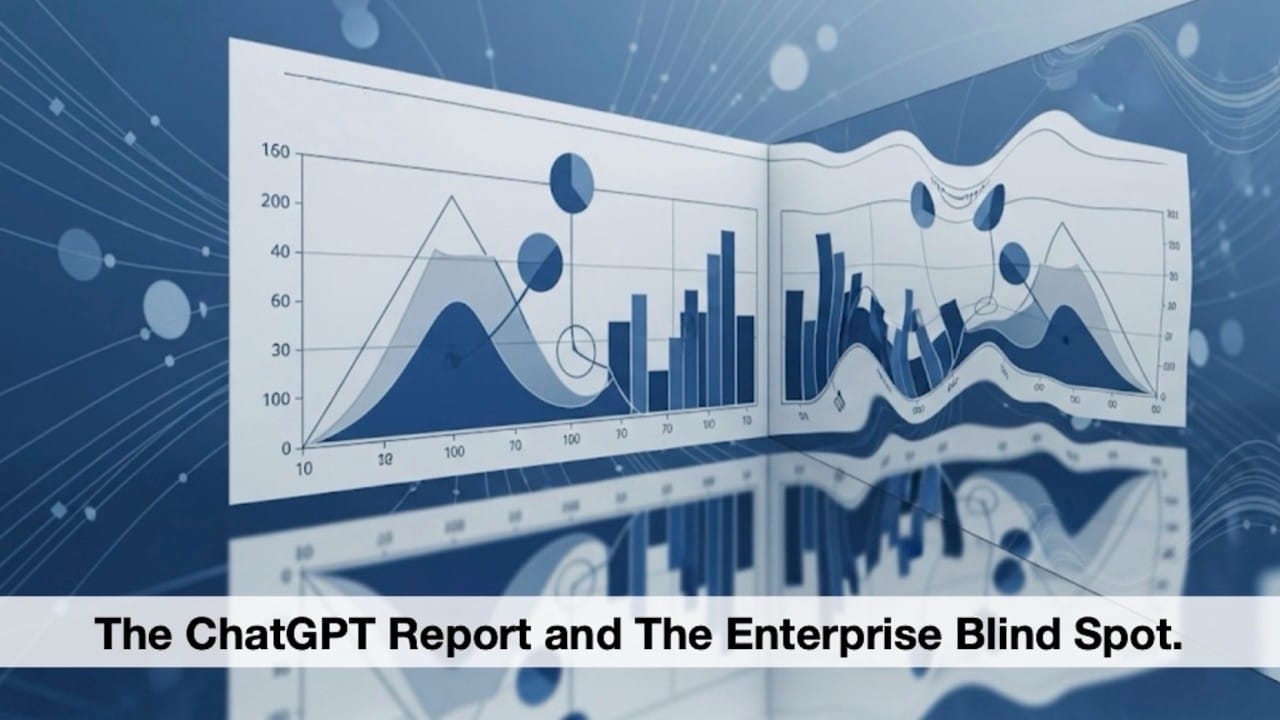The ChatGPT Report and The Enterprise Blind Spot
OpenAI’s ChatGPT usage report is consumer-only, so enterprise signal is skewed. Still clear: AI is a copilot. Writing dominates, most of it editing. Younger users drive volume; older pros drive work. B2B: prioritize decision support, co-creation, embedded copilots, governance.

[Views are my own]
Executive Summary
OpenAI's new report on ChatGPT usage (link in first comment) offers a rich dataset, but for enterprise leaders, it’s a distorted reflection. The study analyzes only consumer usage (Free, Plus, Pro), explicitly excluding Business, Enterprise, and Education plans. As a result, the most critical, high-stakes, and commercially valuable use cases are missing from the data.
Despite this, the report reveals powerful signals. Users don’t treat AI as an autopilot; they treat it as a copilot. They overwhelmingly use ChatGPT to edit, refine, and seek decision support, not just to generate content or complete tasks.
Writing is the dominant work use case, and nearly two-thirds of it involves editing human-generated content. This confirms a strong preference for human-in-the-loop workflows.
Younger users dominate volume, but older professionals contribute more work-related use. This signals an AI-native workforce that expects conversational, intelligent interfaces as baseline functionality. Enterprise products without embedded AI risk obsolescence.
For B2B software, the implications are clear:
- prioritize decision support over automation
- build for co-creation
- embed AI where work happens
- design governance features that preserve trust.
The future of enterprise software isn’t a chatbot. It’s a federated network of intelligent copilots, embedded directly in critical workflows.
That means embedding copilots where core General Work Activities happen most often in knowledge work, including Getting/Interpreting/Documenting Information and Making Decisions.
“How People Use ChatGPT” paper – A personal view
It’s the data drop we’ve all been waiting for. OpenAI, in collaboration with researchers from Duke and Harvard, just pulled back the curtain on how hundreds of millions of people are actually using ChatGPT. The paper, "How People Use ChatGPT," is packed with fascinating stats on the tool’s explosive growth, from its user demographics to the most common conversation topics.
The internet is already buzzing with takeaways. It’s tempting to take these numbers at face value, plug them into our strategy decks, and pivot our roadmaps.
This report reflects real patterns, but in a consumer-only context that distorts enterprise relevance. The research is rigorous; the risk is misinterpretation, not methodology.
The data is sound. The context is everything. Always.

